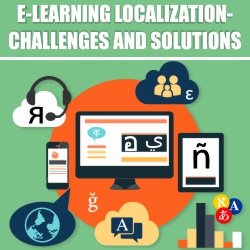E-learning Localization-Challenges and Solutions
- E-Learning Localization
- Comments (0)
 For any global company, digital training modules are an important part of their training material as this same digital stuff can be used to train their staff all across the globe. Actually, these modules can be deployed to train maximum staff at minimal costs. However, if they are developed in only one language, say English, a large number of their workforce would be excluded from the training. This generates a dire need for the localization of such e-learning resources so that they may be used in many foreign regions. However, a lot of organizations face some challenges during localization of their e-learning material, such as-
For any global company, digital training modules are an important part of their training material as this same digital stuff can be used to train their staff all across the globe. Actually, these modules can be deployed to train maximum staff at minimal costs. However, if they are developed in only one language, say English, a large number of their workforce would be excluded from the training. This generates a dire need for the localization of such e-learning resources so that they may be used in many foreign regions. However, a lot of organizations face some challenges during localization of their e-learning material, such as-
- The success of any e-learning module depends upon the perspective of the target user. Therefore, localization process should go beyond the technology and images and should be culturally appropriate for the target learners.
- Right kind of vocabulary and terminology is needed for more acute translation.
- The layout must also remain uniform yet pleasing after localization in all the target languages.
- When designing a layout, make sure that it has a potential space for expansion. Sometimes after localization, content may expand to 20-40% of the original length.
- Repeated elements should be placed in a common repository so that they are replaced only once during localization.
- It is imperative to make your e-learning module culturally neutral. Certain color symbols and linguistic styles have different meaning in different cultures. So, make sure that your language vendor takes care of all these issues.
Comments
No Comments Found.






